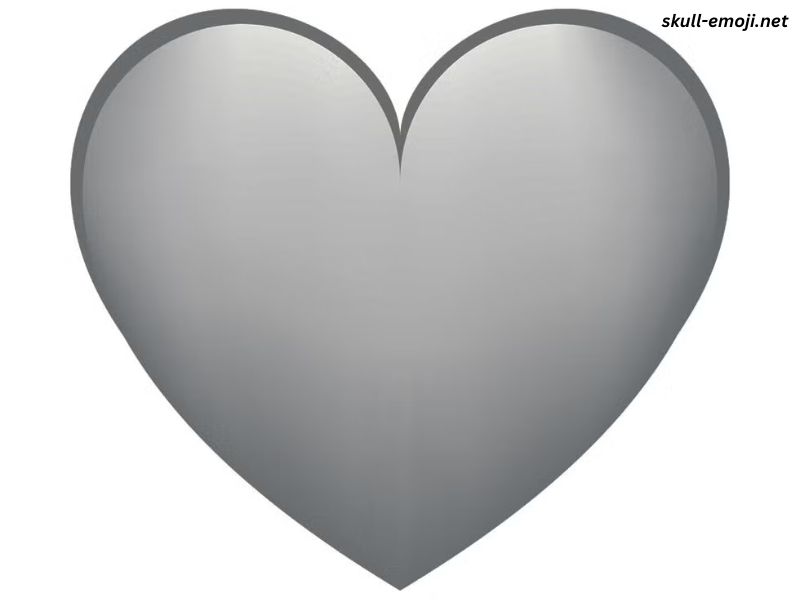In the world of digital communication, emojis have become essential in expressing emotions and thoughts without saying a word. One such popular emoji is the white heart emoji, which has gained significant attention in recent years. But, what does the white heart mean? In this article, we will explore the various meanings and interpretations of the white heart emoji. We’ll also dive into its symbolism, significance in different cultures, and how it’s used in digital communication. Whether you’re a social media enthusiast or someone curious about the nuances of emoji language, this guide will provide a thorough understanding of the white heart emoji.
What is the White Heart Emoji?
The white heart emoji (🤍) is one of the most recent additions to the emoji family. Released in 2019 as part of Unicode 12.0, the white heart emoji quickly became popular on social media platforms such as Instagram, Twitter, and Facebook. The emoji, featuring a simple white heart, often evokes feelings of purity, innocence, and love. While it may seem straightforward, the white heart has various connotations depending on context, usage, and the cultural background of the person sending it.
The Symbolism of the White Heart Emoji
The white heart is a symbol that can carry several layers of meaning, depending on how it’s used. Let’s delve into its core interpretations:
1. Purity and Innocence
One of the most prominent meanings of the white heart emoji is its association with purity, innocence, and simplicity. The white color is often connected with clean slates, new beginnings, and untainted emotions. When used in digital communication, the white heart may signify an individual’s desire for a pure and uncomplicated connection with others.
2. Peace and Harmony
The white heart can also represent peace and tranquility. White is often associated with calmness and serenity, making it a powerful symbol in messages about mental well-being, peaceful resolutions, or spiritual growth. For example, someone might use the white heart emoji after achieving peace of mind or following a peaceful conflict resolution.
3. Spiritual Love and Compassion
In addition to its representation of emotional purity, the white heart emoji is often used to symbolize spiritual love and compassion. It can be an expression of care for others in a selfless, unconditional way. Many people who advocate for mental health awareness, positive energy, or mindfulness may use the white heart to convey their supportive and empathetic feelings toward others.
4. Support for a Cause
The white heart is also sometimes used as a symbol to show support for various causes. It has been adopted by several movements to symbolize solidarity, including campaigns for peace, environmentalism, and even for those who are dealing with issues like addiction recovery. When used in this way, the white heart emoji becomes a powerful tool for communicating values and advocating for positive change.
5. Romantic Love in a Subtle Manner
While the red heart emoji (❤️) is traditionally associated with romantic love and passion, the white heart can be used in a more subtle, gentle expression of affection. It may represent a calm and serene kind of love that isn’t overly intense but is still meaningful. In some cases, individuals may use the white heart to convey a sense of appreciation for someone without the dramatic flair that red might suggest.
How is the White Heart Used on Social Media?
Emojis are integral to the way we communicate online, and the white heart emoji is no exception. Its usage varies based on the platform and the context of the conversation. Here are some common ways people use the white heart emoji across different social media platforms:
1. Instagram
On Instagram, the white heart emoji is often seen in posts that relate to wellness, spirituality, and positive energy. Influencers, wellness coaches, and mental health advocates frequently use the white heart to convey messages of self-love, healing, and mindfulness. The white heart also pops up in captions that are related to peaceful moments, serene landscapes, or moments of reflection.
2. Twitter
On Twitter, users frequently use the white heart emoji to convey support for causes such as peace, equality, and social justice. It’s also used as a sign of appreciation or love, especially in subtle, non-romantic contexts. The white heart might also appear in tweets related to promoting positivity or dealing with challenging emotional topics.
3. Facebook
Facebook users employ the white heart emoji in a variety of contexts, often using it to show empathy or support. It is common to see it in comments related to personal struggles, such as offering condolences after a loss or showing encouragement in the face of hardship. Like other platforms, it also appears in posts related to spirituality and self-care.
4. TikTok
On TikTok, the white heart emoji is often used by creators who share content related to mental health, lifestyle, and wellness. It’s a way to communicate a peaceful or loving message without the strong intensity of other heart emojis. It’s also seen in content encouraging positivity and spreading calm vibes.
Cultural Interpretations of the White Heart Emoji
Different cultures may interpret the white heart emoji in unique ways, influenced by the cultural symbolism of the color white and the concept of love. Let’s take a look at a few interpretations from around the world:
1. Western Culture
In Western cultures, the color white is often linked to purity, cleanliness, and innocence. In the context of the white heart emoji, this can evoke feelings of sincerity, calmness, and non-romantic love. The white heart is often viewed as an emblem of peaceful and supportive relationships, especially those not defined by intense passion but by trust and harmony.
2. Asian Cultures
In several Asian cultures, white can symbolize mourning or sadness, especially in countries like China and Japan, where white is the color associated with funerals. However, in modern digital communication, the white heart emoji has been largely embraced as a symbol of peacefulness, tranquility, and balance, aligning more with the general use of white to represent purity and spirituality in those regions.
3. Middle Eastern Cultures
In some Middle Eastern cultures, the white color signifies a fresh start, peace, and a connection to the divine. The white heart emoji in this context may be used to express both spiritual love and purity, evoking feelings of connection to a higher power or to a peaceful state of being.
Why the White Heart Emoji is Gaining Popularity
The white heart emoji has been gaining traction for several reasons. In an era where online communication is becoming increasingly important, people are looking for ways to convey emotions that are more nuanced than the basic expressions of love. The white heart provides a way to express kindness, support, and affection in a way that feels less intense than the red heart emoji.
Moreover, as more individuals and communities embrace wellness, mindfulness, and mental health awareness, the white heart’s association with purity, peace, and support makes it an ideal symbol to use in those contexts. It has become a go-to emoji for individuals who want to share messages of hope, healing, and positive energy with their followers.
Conclusion: The White Heart’s Evolving Meaning
In summary, the white heart emoji (🤍) carries a variety of meanings depending on context, culture, and individual interpretation. It’s a symbol of purity, innocence, peace, and support, and is used in a variety of digital communication spaces to express love, compassion, and advocacy for positive change. As its usage continues to grow, the white heart is likely to evolve further, adapting to new trends and cultural shifts in the digital age.
Whether you’re using it to represent subtle romantic love, advocate for peace, or simply share your support for a friend, the white heart emoji is a versatile and meaningful addition to your emoji repertoire. So, next time you send a message or make a post, consider using the white heart to convey a deeper sense of connection, purity, and peace.



